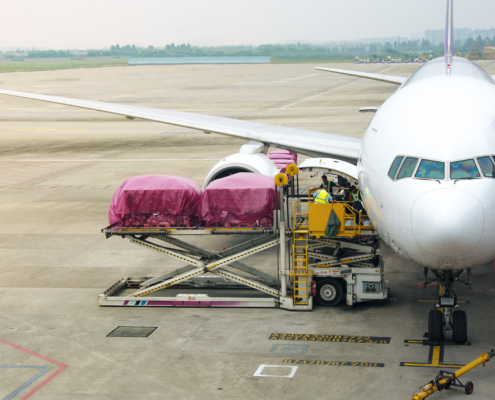 https://cargotransinc.com/wp-content/uploads/2025/02/Airplane-being-loaded-with-packages.jpg
1250
2000
Abstrakt Marketing
https://cargotransinc.com/wp-content/uploads/2025/06/CargoTrans-Logo-Color-300x104.png
Abstrakt Marketing2025-02-25 15:09:022025-11-17 19:16:53Enhancing Retail Supply Chains: The Role of Air Freight in Meeting Consumer Demands
https://cargotransinc.com/wp-content/uploads/2025/02/Airplane-being-loaded-with-packages.jpg
1250
2000
Abstrakt Marketing
https://cargotransinc.com/wp-content/uploads/2025/06/CargoTrans-Logo-Color-300x104.png
Abstrakt Marketing2025-02-25 15:09:022025-11-17 19:16:53Enhancing Retail Supply Chains: The Role of Air Freight in Meeting Consumer DemandsNavigating Customs Clearance Processing Procedures: Your Complete Guide
Importing goods into a country involves numerous steps, regulations, and requirements. One critical phase is the clearance process, which ensures that imported goods comply with local laws and regulations before they enter the market. Navigating customs clearance processing procedures can be complex, but understanding each step can make the journey smoother and more efficient.
In this blog, we’ll break down the key aspects of customs clearance, from preparing necessary documentation to paying duties and taxes and getting your goods released for delivery.
What is Customs Clearance?
At its core, customs clearance is the process that goods must go through when entering or leaving a country. The role of customs authorities is to enforce national regulations, ensure proper tariffs are collected, and verify that the goods comply with all applicable laws. Customs involves submitting necessary documentation, inspections, and paying duties, taxes, or other fees before goods are released for commercial use or further transportation.
Customs clearance processing is required for all types of goods entering or exiting a country, whether they are commercial goods, personal belongings, or even gifts. Delays in customs can occur if any part of the process is incomplete or inaccurate, causing potential disruptions to the supply chain.
Preparing Documentation: The First Step in a Smooth Process
The first, and perhaps most crucial, step in customs clearance processing is preparing and submitting the required documentation. Incomplete or incorrect documentation can lead to delays, fines, or even seizure of goods. Below are some key documents that are typically required for the customs clearance process:
- Bill of Lading (BOL): A legal document between the shipper of goods and the carrier detailing the type, quantity, and destination of the goods being transported.
- Commercial Invoice: This provides customs authorities with details about the shipment, including the value of goods, their classification, and the country of origin.
- Packing List: This document provides an itemized list of goods in the shipment.
- Certificate of Origin: This certifies the country where the goods were manufactured, which is important for determining duties and tariffs.
- Import/Export License: Some goods may require specific permits or licenses to be legally imported or exported.
- Customs Declaration Form: This is submitted to customs authorities, providing a full account of the goods being imported.
Properly preparing and organizing these documents in advance can save valuable time during the customs process. It’s also wise to work closely with a customs clearance broker or a logistics expert to ensure that all documentation complies with the regulations of the importing country.
Customs Inspection: Expecting the Unexpected
Once the required documentation is submitted, customs authorities may choose to inspect the shipment. Not every shipment is inspected, but random checks and inspections based on specific risk factors are common. The inspection process ensures that the goods comply with regulations, that their value is accurately declared, and that they pose no safety, health, or security risks.
Customs inspections can vary in scope and complexity. They may involve a simple paperwork check, where customs agents verify that the documentation matches the declared goods, or they may conduct a physical inspection of the cargo. Some of the factors that might trigger a customs inspection include:
- Incomplete or suspicious documentation
- Goods from high-risk regions
- Unusual cargo types (dangerous goods, restricted items, etc.)
- Random selection
Duty and Tax Assessment: How Customs Authorities Calculate Fees
One stage you cannot overlook in customs clearance processing is the assessment of duties, taxes, and other fees that must be paid before the goods can enter the country. These fees are typically based on several factors, including:
- Value of Goods: Customs duties are often calculated as a percentage of the total value of the goods, as declared in the commercial invoice.
- Classification of Goods: Goods are classified under the Harmonized System (HS) Code, which assigns a tariff to each product category.
- Country of Origin: Depending on trade agreements between countries, the duties imposed may vary. Free trade agreements between certain nations can lead to reduced or zero tariffs on specific goods.
- Quantity or Weight of Goods: In some cases, duties may be imposed based on the weight or quantity of goods being imported.
- Tariffs on Restricted Goods: Some products, such as alcohol, tobacco, or firearms, may be subject to higher duties and taxes due to their restricted nature.
Duties and taxes can heavily impact the cost of importing goods, so it’s important to calculate these fees ahead of time. Working with a customs clearance broker or using online customs duty calculators can help you estimate the total amount owed.
Some countries also offer duty exemptions for certain types of goods or provide reduced tariffs for items that comply with sustainability or environmental standards. Understanding the local rules for duty and tax assessment is essential to managing the costs of customs clearance.
The Final Steps of Customs Clearance Processing
Once you’ve prepared your documentation, passed inspections (if applicable), and assessed duties and taxes, the process is nearly complete. However, there are still a few more steps that must be taken before your goods can be delivered to their final destination. Here’s an overview of the entire customs clearance process:
- Submit Documentation: Submit all required documentation to customs authorities. This is typically done electronically through a customs broker or freight forwarder.
- Customs Inspection (if required): If selected, your goods may undergo a customs inspection. Customs officers may check the documentation or physically inspect the cargo to ensure compliance with laws.
- Duty and Tax Payment: Once duties and taxes are assessed, you’ll need to pay the total amount due. This payment is often made through the customs broker, who facilitates the financial transaction.
- Release of Goods: After all fees are paid and the documentation is approved, customs authorities will release the goods. Depending on the mode of transport (air, sea, or land), the goods may be delivered to a bonded warehouse before being transported to their final destination.
- Delivery to Destination: The final step is the delivery of the goods to their intended destination. If you’re working with a logistics company or freight forwarder, they’ll arrange transportation and ensure the goods arrive at your warehouse, distribution center, or customer location.
Have total peace of mind working with a Nationally-Permitted U.S. custom clearance broker at CargoTrans. Learn more about our services.
Common Customs Clearance Mistakes and How to Avoid Them
Dealing with customs can be complicated, and even small mistakes can cause delays or added costs. Below are some common customs mistakes and tips on how to avoid them:
- Incomplete or Incorrect Documentation: Always double-check that all forms are correctly filled out and submitted to avoid rejections or delays.
- Wrong Classification of Goods: Ensure the correct HS codes are used for each item to prevent misclassification and unexpected duties.
- Failure to Pay Duties and Taxes: Make sure that all applicable duties, taxes, and fees are paid in full and on time.
- Missing Licenses or Permits: Verify whether your goods require any special permits or licenses before shipping.
Trade Compliance and Management Services by Cargotrans
At CargoTrans, we offer comprehensive Trade Compliance and Trade Management services to help your business stay ahead of international regulations. Whether you’re looking to review or build a compliance program, integrate cutting-edge technology, or manage supply chain risks, our expert team ensures you remain compliant, avoiding costly penalties and disruptions.
CargoTrans: Your Go-To Customs Clearance Broker
CargoTrans has a dedicated team of certified customs brokers who specialize in handling the customs process. With our in-depth knowledge of trade management and compliance, we ensure your shipments are processed smoothly and without delays. We take a customer-centric approach, offering personalized solutions to meet your specific needs. Our expertise in trade compliance means we stay ahead of regulations, so all your goods pass through customs efficiently and in full compliance with the law.










